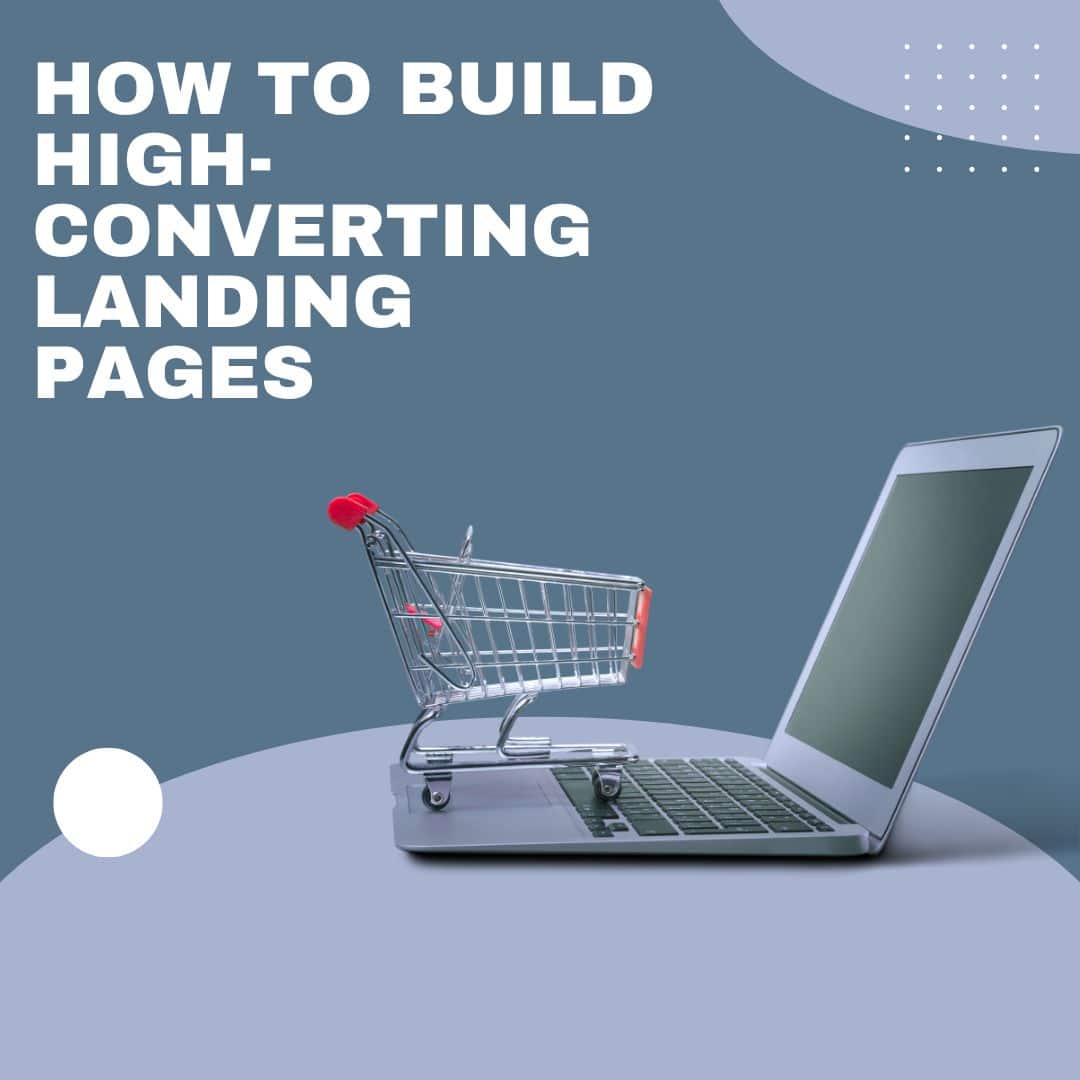Creating a successful Google Ads campaign requires more than just setting up ads. You also need to create high-converting landing pages that will capture leads and drive conversions. Creating good Landing pages is the key to success for any Google Ads campaign, so it’s important to know how to create one that will maximise your return on investment. Here are some tips for creating high-converting landing pages for your Google Ads campaigns.
Understanding Your Audience
The first step in creating a high-converting landing page is understanding your target audience. Knowing who you’re targeting will help you create content and design elements that appeal to them. Take the time to research your audience and get an understanding of their needs, wants, and interests. This will help you create a landing page that resonates with them and encourages them to take action. Below are some tips on how to research your audience:~
- Use Google Analytics: Google Analytics is a powerful tool that can provide you with a lot of information about your audience, including demographics, interests, and behaviour. Use this data to understand who your target audience is and what they are interested in.
- Conduct surveys: Surveys can be an effective way to gather information about your audience. You can use tools like SurveyMonkey or Google Forms to create surveys and distribute them to your audience via email or social media.
- Use customer feedback: Talk to your existing customers and gather feedback from them about their experience with your product or service. Use this feedback to create landing pages that address their needs and pain points.
- Look at competitors: Research your competitors and their landing pages to see what works for them. Analyse their messaging, design, and calls-to-action to get ideas for your own landing pages.
- Use social media: Social media can be a great way to understand your audience. Monitor your social media channels and engage with your followers to gain insights into their interests, questions, and concerns.
Create Compelling Copy
Once you understand your audience, it’s time to start writing compelling copy for your landing page. Your copy should be clear, concise, and persuasive. It should also be tailored to your target audience so they can easily understand what you’re offering and why they should take action. Make sure to include a call-to-action (CTA) at the end of your copy so visitors know what they need to do next. Below are some tips on writing compelling copy:~
- Know your audience: To write compelling copy, you need to understand who you are writing for. Make sure you have a clear understanding of your target audience and their needs, pain points, and desires.
- Focus on benefits: People are more likely to take action if they understand the benefits of doing so. Make sure your copy highlights the benefits of your product or service and how it can solve your audience’s problems.
- Use persuasive language: Use persuasive language that speaks directly to your audience. Use words and phrases that resonate with them and make them feel like you understand their needs.
- Be clear and concise: People don’t have a lot of patience, so make sure your copy is clear and concise. Use short sentences and paragraphs and avoid using jargon or complex language.
- Use social proof: People are more likely to take action if they see that others have done so before them. Use social proof, such as customer testimonials or reviews, to show that your product or service has been successful for others.
- Use a strong call to action: Your call to action (CTA) should be clear, specific, and urgent. Use action-oriented language and make it easy for your audience to take the desired action.
For example, instead of “Click here for more information,” try “Get your free guide now” or “Sign up for our newsletter and start saving today.”
Optimise For Mobile Devices
With more people accessing the internet from their mobile devices, it’s essential that your landing page is optimised for mobile users. Make sure all of the text is legible on smaller screens, images are optimised for mobile devices, and buttons are large enough for users to click on easily. If possible, use responsive design so your landing page automatically adjusts its layout depending on the device being used. Below are our top tips to help you optimise for mobile devices:~
- Responsive design: Ensure that your website or landing page is designed with responsive design. This means that the layout of your page should adjust to fit the screen size of the device it’s being viewed on. This makes your content easy to read and navigate on any device.
- Simplify your design: Keep your design simple and minimalistic. Too much clutter can make your website or landing page difficult to navigate on a small screen. Use a clean layout with clear headings, short paragraphs, and plenty of white space.
- Use clear calls to action: Make sure your calls to action (CTAs) are prominent and easy to tap. Use large buttons with clear, concise copy to encourage users to take action.
- Optimise images and videos: Large images and videos can slow down your website, which can be frustrating for mobile users. Optimise your images and videos by compressing them and using formats that load quickly on mobile devices.
- Consider load time: Load time is critical for mobile users. Reduce the size of your files, eliminate unnecessary scripts, and use caching to speed up your website.
- Test your website: Test your website on various mobile devices to ensure that it looks and performs well on different screen sizes and operating systems. Make sure that your website is easy to navigate and that all links and buttons work correctly.
Include Visual Elements
Images can be powerful tools when it comes to creating high-converting landing pages. Including visuals such as product images or videos can help draw visitors in and keep them engaged with your content longer. Visuals also help break up long blocks of text which can make it easier for visitors to digest information quickly and take action on your CTA. Below are our top tips on using and implementing visual elements on your landing page
- Use high-quality images: High-quality images can help to make your landing page look more professional and engaging. Choose images that are relevant to your product or service and that convey the benefits of using it.
- Use videos: Videos can be a powerful tool for increasing conversions. Use videos to demonstrate your product or service in action or to provide a customer testimonial.
- Use clear and bold headlines: Use clear and bold headlines to grab the attention of your visitors. Your headlines should clearly communicate the value of your product or service and what sets it apart from the competition.
- Use infographics: Infographics can be a great way to communicate complex information in an easy-to-understand way. Use infographics to illustrate the benefits of your product or service, or to provide statistics or data that support your claims.
- Use visual hierarchy: Use visual hierarchy to guide your visitors’ attention to the most important elements on your landing page. Use larger fonts and bold colours to highlight your headlines and calls to action.
Test & Monitor Results
The last step in creating a high-converting landing page is testing and monitoring results over time. Use A/B testing methods such as split testing or multivariate testing to test different versions of your landing page until you find one that works best for you. Once you have a winning version, continue monitoring results over time so you can make adjustments as needed based on user feedback or changes in user behaviour patterns. Here are our top tips on testing and monitoring your landing pages.Below we share our top tips on testing and monitoring your landing pages:~
- Use A/B testing: A/B testing involves creating two versions of your landing page, with one variable changed between them. This allows you to test which version performs better with your audience. Test different elements, such as headlines, images, calls to action, or even different layouts.
- Monitor your analytics: Use tools such as Google Analytics to monitor your landing page’s performance. Track metrics such as bounce rate, time on page, and conversion rate to understand how your visitors are interacting with your page.
- Set goals and track conversions: Set specific goals for your landing page and track conversions. This allows you to measure the success of your page and identify areas for improvement.
- Monitor user behaviour: Use heat maps or user recordings to understand how users are interacting with your landing page. This can help you identify areas where users are getting stuck or where there are opportunities for improvement.
- Continuously improve: Use the insights you gain from testing and monitoring to make improvements to your landing page. Continuously test and refine your page to optimise its performance and increase conversions.
To sum up, creating high-converting landing pages is crucial to the success of any Google Ads campaign. To do this, it is important to understand your audience, create compelling copy, optimise for mobile devices, and include visual elements. Rankfresh can help businesses create such landing pages that resonate with their audience and drive conversions. By researching the target audience, using persuasive language, optimising for mobile devices, and including visual elements, businesses can create landing pages that capture leads and drive conversions.


